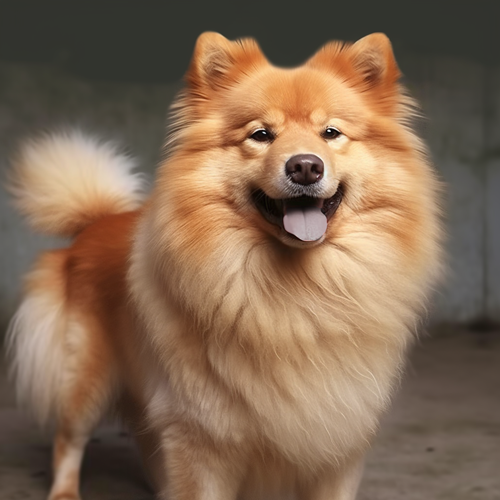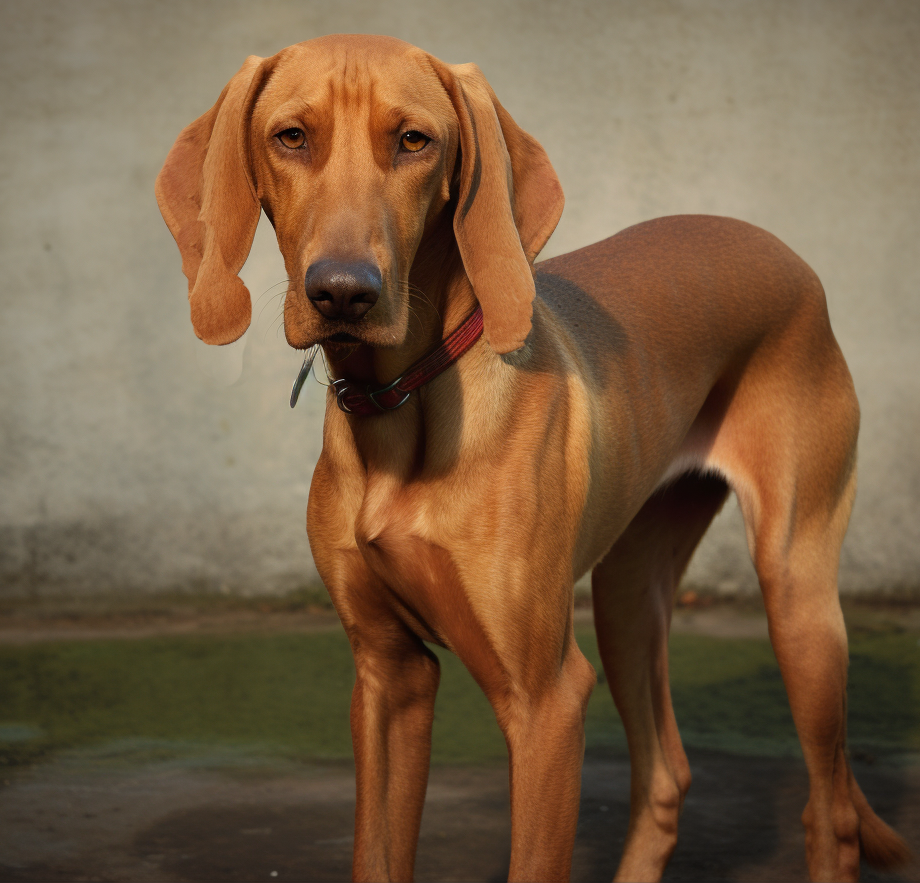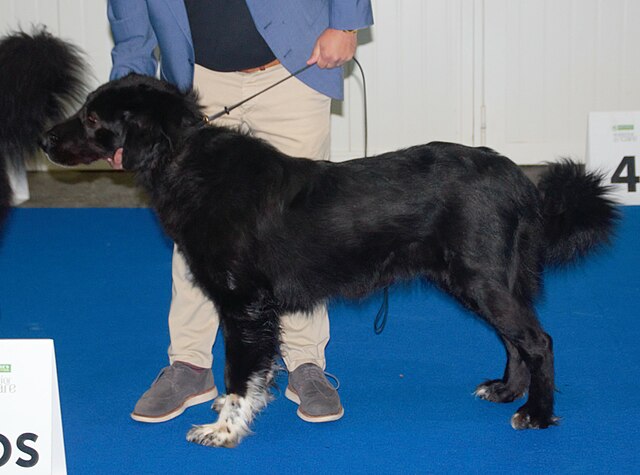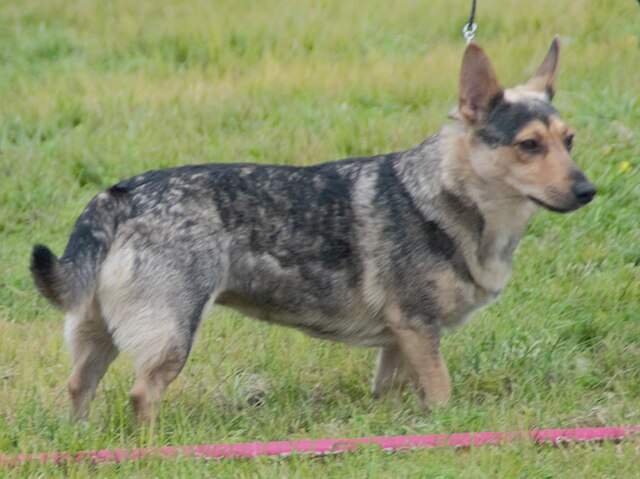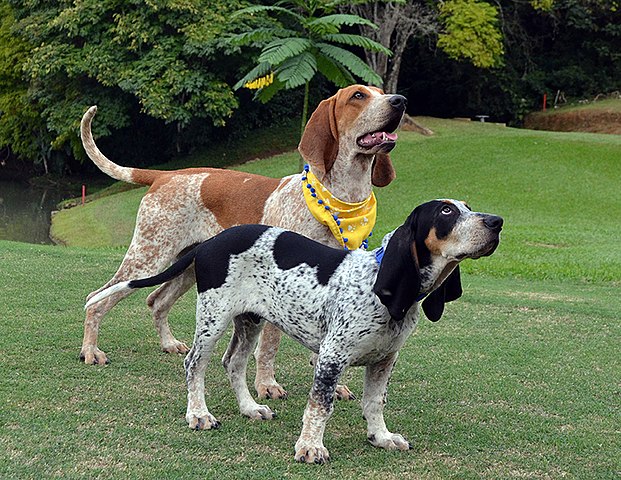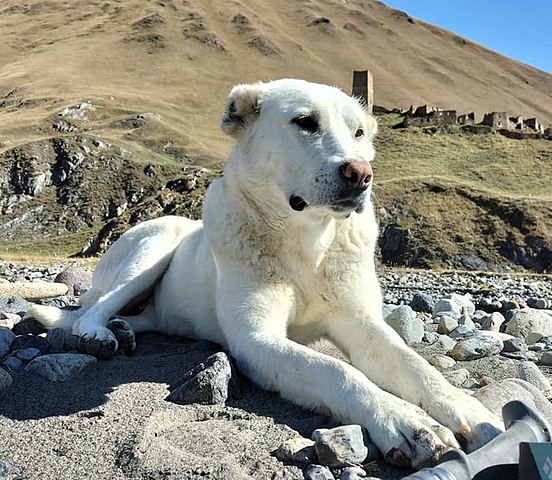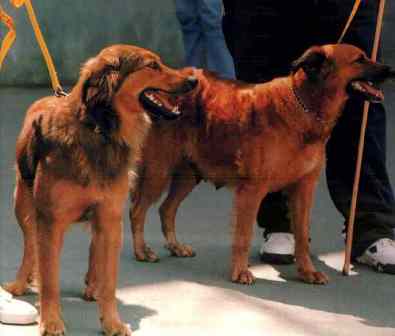The Lithuanian Hound is a rare scenthound breed recognized only by the Lithuanian Kennel Club. They are, in fact, the only native breed to Lithuania! Bred to hunt hare, wild boar and fox they are thought to be the result of mixing Bloodhounds with Polish Hounds, Beagles and Russian Hounds hundreds of years ago. While at one time very popular in their home country, unfortunately numbers dropped drastically after World War 2 and only 78 individuals were said to be recorded at that time. Thankfully there was enough interest in the breed for fanciers and breeders to keep them alive and in 1966 the first official standard was written. Despite best efforts however, numbers are still low enough that inbreeding is a concern among fanciers.
Lithuanians are always black and tan in color, with a smooth coat. They are large, muscular and robust with “solid and massive bone structure”. The hanging ears are triangular in shape with rounded ends. The neck is muscular and without folds or wrinkles, and holds the wedge-shaped head upright. The muzzle is slightly short. The eyes are dark, oval and set deep in the skull. Teeth are large and meet in a scissor bite. It is very important in the standard that all teeth be present. The long tail is thick at the base and slowly thins as it reaches the end, like a sword. Normally held low, when the hound’s mood rises so does the tail!
The Lithuanian Hound is a determined hunter and when he sees his prey he’ll race after it with much enthusiasm – likely baying the entire time! After the hunt is over however, and he is safely back at home, he is easygoing and pleasant to live with as long as his needs are met. Like many scenthounds he needs plenty of vigorous exercise every day such as running alongside a bike, in combination with regular opportunities to run in a fenced area. A short walk is definitely not enough! If he isn’t exercised adequately he can become destructive and frustrating to live with. Keep in mind this active breed lives an average of 12-14 years and will need regular exercise throughout the majority of his life. It goes without saying but this is not an apartment-friendly breed, and a small house without a yard would not be a great fit either. 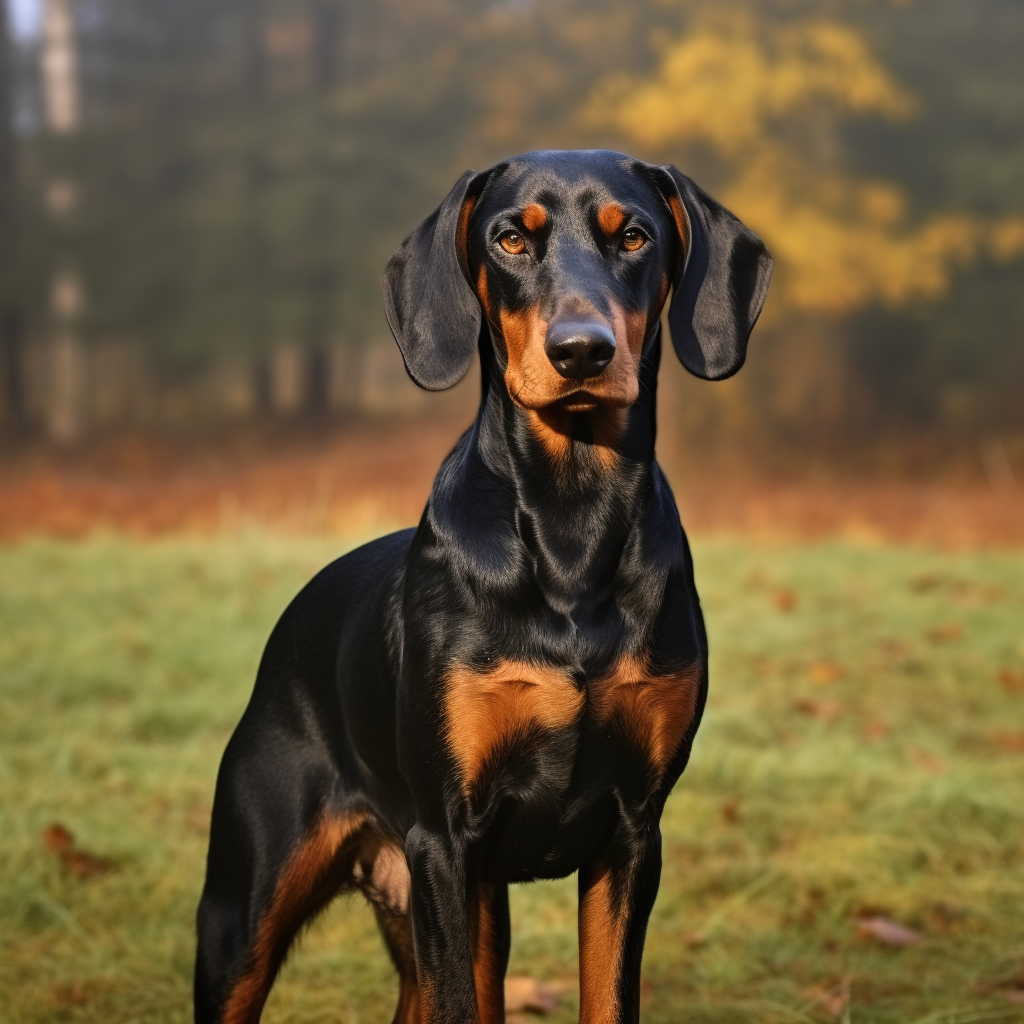
While Lithuanians are aloof and occasionally even aggressive around strangers, they form close attachments with their owners and develop deep social bonds. They get along well with older children and other dogs. Small kids may be too easily knocked over so they aren’t the best match. Household cats are also a no-go, as this breed is too hardwired to give chase to small, furry animals. Many of these hounds can become great watchdogs, alerting their people to the presence of unfamiliar visitors on the property.
Lithuanians Hounds like to please their owners and tend to learn quickly but are too prey-driven to be completely trusted off-leash unless given extensive training. For the average household it is best to keep them in a fenced area or safely on lead so that they don’t go running after the first small animal they see or sniff. It is recommended while training that the owner be firm, yet fair and utilize lots of short sessions throughout the day rather than one long “boring” lesson. Make training fun and you’ll both have a great time!
Although very social and people-driven, the Lithuanian isn’t prone to separation anxiety. He is also easy to care for as far as grooming, with a weekly brush being sufficient to keep his coat shiny. He does shed twice a year but his coat is so short it is barely noticeable, especially if he is getting brushed regularly. He only needs a bath every 6-8 weeks as long as he hasn’t dived into a mud puddle while hunting in the yard. General upkeep would be easy if it weren’t for the substantial exercise requirements, which means that a prospective owner must be ready to face that challenge head-on.


